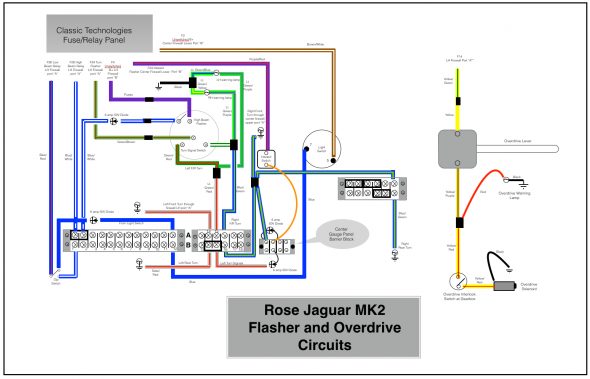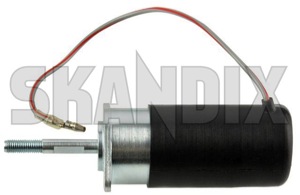

Visit the Triumph Stag Composite Radiator Cowl page for more information. If your Stag doesn’t have a radiator fan cowling, new composite cowls are now available. Removal of the cowl solved the noise problem, but may have created an overheating problem. Many of the cowls were removed when the original engine mounts sagged, causing the engine driven radiator fan to rub against the cowl. Mark II Stags originally came with a sheet metal radiator fan cowling to increase the efficiency of the radiator cooling fan. Internal corrosion of the coolant passages is another problem if a corrosion-inhibiting coolant was not used. Some people have had to lift the car with an engine hoist and pound on the head studs with an air hammer, using the weight of the car to pull the studs through the head. An electrochemical reaction between the aluminum head and the steel studs causes the head studs to seize in place, making head removal almost impossible since the studs and bolts used to attach the head to the block are not parallel. A blown head gasket can also cause engine coolant to seep between the head and the studs. In some cases, this is still not enough to save the head. The trouble is that Triumph only allowed 0.010″ for removal before the head had to be replaced. The blown gaskets which soon follow can lead to damaged head faces which will need skimming if they are to be rescued. Like the TR7 (which uses half of the Stag V8), Stag heads have a bad reputation for warping in service, often with as few as 25,000 miles. If not, leave well enough alone.Īn overheating Stag will eventually end up with a warped head. In addition, check that the thermostat (in the intake manifold) hasn’t been removed to mask some chronic cooling problem, and make sure that the oil pressure light is connected. If it’s not, there may be problems with coolant circulation and expensive damage may have already been done. Check that the radiator is as hot at the bottom as it is at the top. To test it, you should let any potential purchase idle for 15 minutes (preferably on a hot day) while keeping an eye on the temperature gauge. The key problem with the Stag is its cooling system. Some people have even christened it the “Triumph Snag”. The Stag engine has proved to be its great weakness. Production for other markets continued until June of 1977. Importation to the US market ended after 17 months in July of 1973. Starting with chassis number LD41994, this was changed to a Borg-Warner Type 65 transmission. Other markets used the Borg-Warner Type 35 up to chassis number LD41993. All US automatic transmission-equipped cars were fitted with a Borg-Warner Type 35 transmission. This was changed to a “J” Type overdrive (0.797:1) starting with chassis number LD21231 (LE20857 in the US). An “A” Type overdrive (0.82:1) was fitted up to chassis number LD21230 (LE20856 in the US).
Laycock overdrive solenoid diagram manual#
The Stag was available either with a 4-speed (with overdrive) manual or 3-speed automatic transmission. Along with some cosmetic changes, gauges now pointed up, seats were changed, the air filter was different, compression was lowered, steering ratio was changed and a smaller steering wheel was fitted. Mark II Stags were introduced in February of 1973.

The US version had lower-power, emission control, and side marker lights with a “Stag” badge under the rear side light. US-market Mark I Stags were introduced in September of 1971.

Mark I Stags had downward pointing gauge needles among other distinguishing features. Market launch date in the UK was in April or May of 1970, now commonly referred to as the Mark I Stag.


 0 kommentar(er)
0 kommentar(er)
